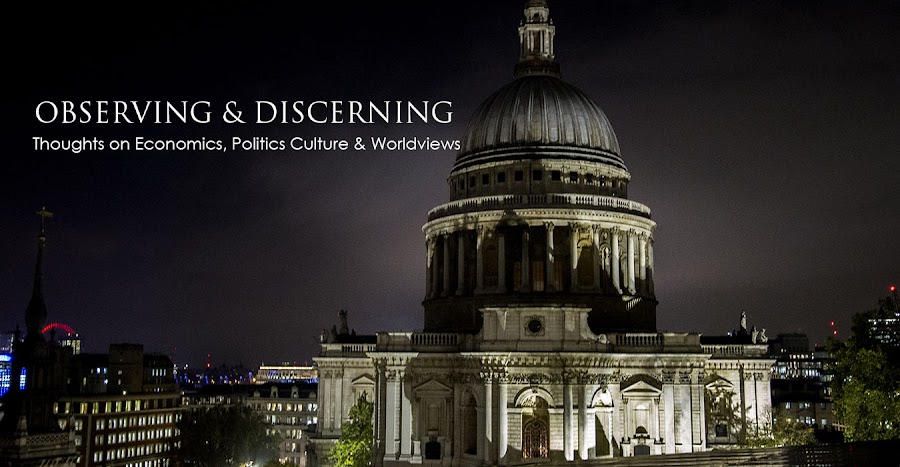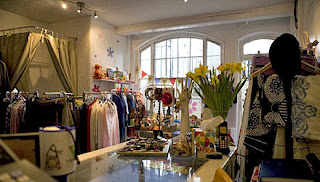The most powerful message which the Occupy movements around
the world brought to our collective attention is that the gains from economic
growth and prosperity have not been shared fairly among its producers and
contributors. The outcomes are
apparent in the statistics on wealth inequality, stagnating wages, squeezed
living standards, job insecurity, long-term joblessness and the
disenfranchisement of the young to name a few of the most prominent and
problematic.
Though a good proportion of the growth in unemployment during
recent years has come about as the result of weak demand, this has exacerbated the underlying trend of technologically-driven unemployment. Economists
Erik Brynjolfsson and Andrew McAfee of MIT have found in their research and described in their books that new technologies
are making more jobs redundant than they're enabling and that due to Moore’s
law, trends in technology-embedded aspects of life will only increase. Examples that come to mind are clerkless
checkouts and the imminent driverless cars. Though over a longer horizon technology will
enable innovations that will benefit humanity, the interregnum will be unsettling
as the chronic under and unemployment are likely to be personally and socially
corrosive.
What ICTs can do very well, as pointed out by Kal Raustiala
and Christopher Sprigman in their new book The Knockoff Economy, is often to lower the costs of innovation,
sometimes dramatically. Making music
used to require a large costly studio; now it can happen with a keyboard, laptop and
Logic software. Digital files can be
uploaded to an artist’s website or YouTube and distributed easily anywhere with
an internet connection. Likewise for
photography and some forms of art:
Sometimes technological advances like these make it possible for one person to do what many did before...other times they allow many individuals to do what one (or a few) did before, by permitting large-scale tweaking...Perhaps the most important effect of technological change, however, is it reduced the cost of making and distributing creative work.
I propose a possible solution, not only to the issue of
social exclusion of the young and unemployed, but also the deterioration of the
British high street in the form of a new type of community centre: a fusion of
coffee house, open mike night and art exhibition space: a multi-sensory,
multi-talent shop and theatre. I’m talking about working around established
channels of commerce and the traditional media.
Using human ingenuity combined with technology, social media and vacant
high street premises, the unemployed could, without enormous investment or cost,
turn talent into a living and reinvigorate their local community.
Analysis by the Centre for Economics and Business Research found that the arts and culture deliver a significant return on relatively small levels of government spending and directly lead to at least £845m of spending by tourists in the UK. Arts Council England commissioned this research to determine the economic impact of the arts along with the National Museum Directors' Council. The chief executive of ACE, Alan Davey commented that the report:
quantified what we have long understood - that culture plays a vital part in attracting tourism to the tune of £856m a year; that arts centres and activities transform our towns and cities and drive regeneration, making the choice to maintain investment in culture a forward thinking one for local authorities; and that the arts support the creative industries and improve their productivity.Some other findings of the report:
- turnover of businesses in the arts and culture industries was £12bn in 2011 which in turn led to an estimated £5.9bn of gross value added to the UK economy in the same year.
- the sector provides more than 110,000 jobs directly or 260,300 once indirect impacts are included
Another key finding is that art and culture improve national productivity: "Engagement with the arts and culture helps to develop people's critical thinking, to cultivate creative problem solving and to communicate and express themselves effectively." It's clear from this report that there are enormous tangible and intangible benefits of the arts to the economy and to individuals who create and enjoy the arts and culture.
I’m also drawing on the work of Tyler Cowen in his new book,
Average is Over: Powering America Beyond the Age of the Great Stagnation in
which he poses a remedy to problems caused by disruptive technological
change. The thesis of this book is that
better outcomes are available when people are able to discern which capabilities
they have which are special – and particularly human – and which aspects of their
activities are better accomplished by computers. The obvious reason for this is that there is
a great deal of evidence now that routine work done in formerly middle-income
and skilled jobs has been taken away either by computers or offshore production. The result has been a hollowing
out of the middle of the income distribution. A recent report by the Resolution Foundation found that in the UK a two tier workforce has emerged: the lower tier being characterised by low-paid, low-skilled work which is often temporary, part-time or self-employed. Early signs of an economic recovery are having little impact on this trend with rates of part-time or temporary work among new employees (those starting or returning to work) remaining high. The median hourly wage for a new employee stood at £8.42 in 2009; today it is under £8.
Empty shops in the high street could be converted into
comfortable, stylish community centres, designed, decorated and furnished
through local donation and contribution (this is done beautifully every Wednesday in The Kitchen in Egham, Surrey). It could
serve as a cafe with entertainment, including music, comedy and poetry readings, and offer artwork, sculpture, baking and cooking for sale. Professionals and the retired could donate their time and wisdom to advising on artistic as well as business matters. Marketing could be via local newspaper, flash mobs and social
media. Parking should be free for a set period of time. Such a centre would be a sort of permanent pop-up shop or
indoor farmer’s market of talent. It could be set up as a social
enterprise, either subsidised through the council or crowd-funded. It would provide not just
vocational development, but an outlet for creative energy as well as
foster a greater sense of community, something sorely needed in these days of depleted social capital.
Those performing at, producing goods or art for or serving at
the community centre could gradually expand their audience or customer base and could eventually become entrepreneurs in their community and mentors to the
centre. An important advantage of the new
community centre is that it offers a physical space to accommodate development
and showcase talent – an advantage beyond what Kickstart and other social
enterprise schemes offer.
The Vineyard Community Centre in Richmond-upon-Thames offers
some of what I’m talking about, though I would suggest that having a centre on
the high street would offer greater footfall and profile and stir up greater
local excitement and community involvement. I'm thinking less drop-in centre, more Le Quotidien with art, music, dance and crafts - perhaps even unique fashions. I'd love to pop into a local high street community centre like that.



.jpg)
.jpg)